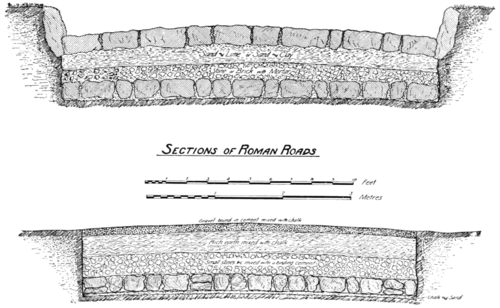ditions, has always resulted in great mortality, as witness the terrible plagues which have swept over the old cities of Europe, and the disastrous results during the summer of 1898 of concentrating large numbers of our volunteers in camps not subjected to rigid sanitary regulations.
It has been amply demonstrated, however, that our cities can be made at least as healthful as the country districts, and an increasingly large number of engineers are engaged in such city building.
One branch of this municipal work will be considered in this paper—that of street improvement. The first impression gained by a stranger entering a city is undoubtedly that produced by the appearance of its streets. If they are poorly paved, irregular,

dirty, and generally unkempt, he will consult his time table to see how soon he can get away. If they are broad, smooth, clean, well shaded and lighted, he will stay as long as possible.
In spite of the pride of the American people in the development of our cities, and notwithstanding the fact that their wealth enables them to have only the best, they have been slow to appreciate the value of thoroughly well-paved streets. As stated by Mr. Albert Shaw, European cities have been ahead of us in accepting the doctrine that "smooth and clean highways are a wise investment from every point of view, and that so long as the work is done in a thorough and scientific manner the result is worth having, regardless of cost. No city should think itself rich enough to prosper without them, and no city is so poor that it can not afford them if it has any reason whatever for continued existence.
